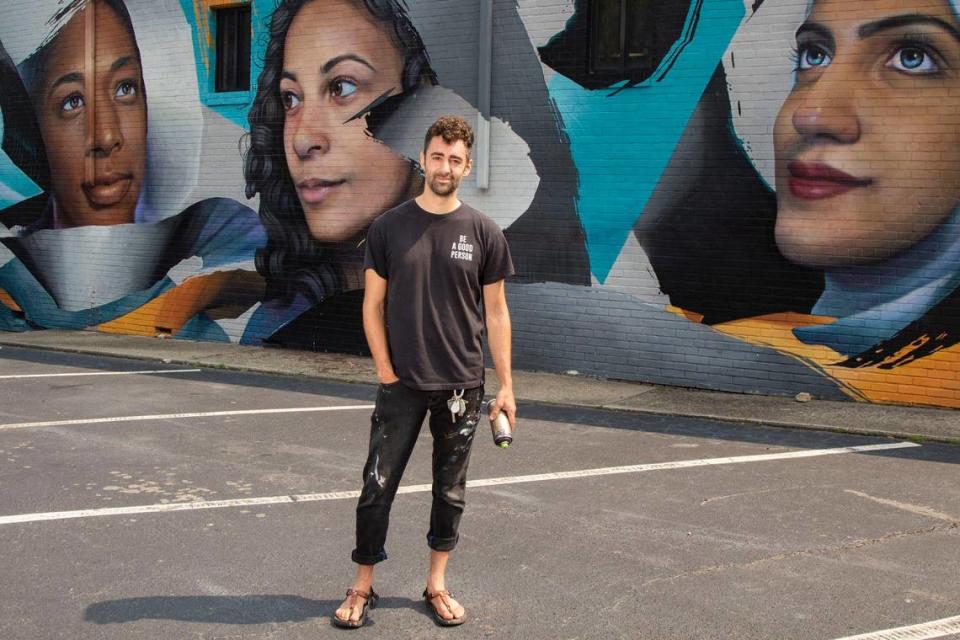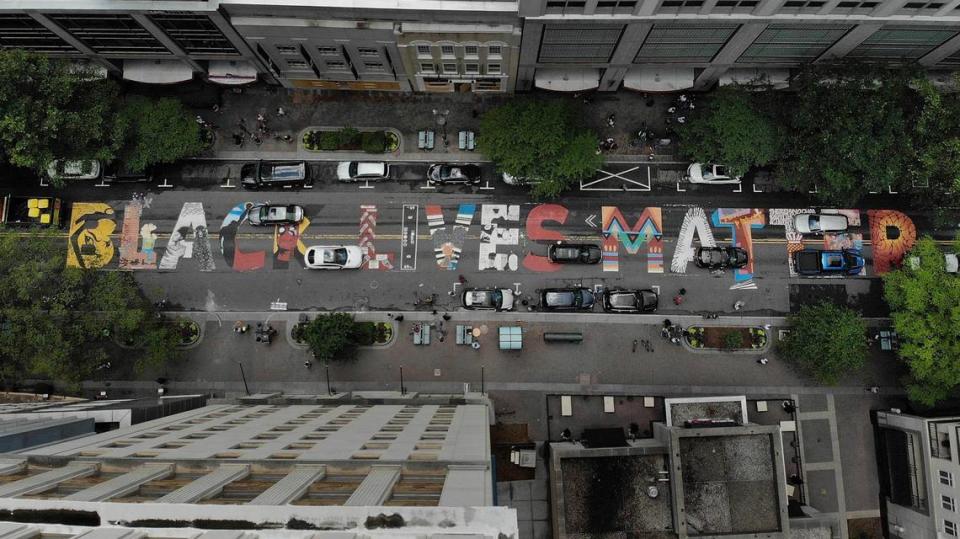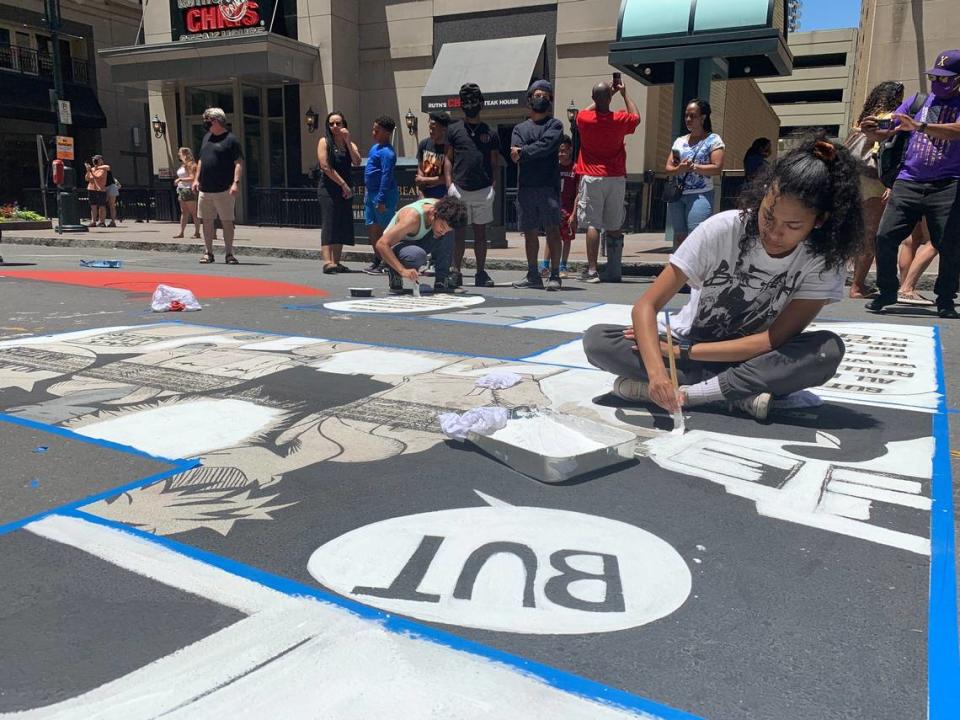Vandalism or art? Charlotte artists share insights after an uptown mural defaced
For artists whose canvases are displayed on the walls of museums, the likelihood that their work will be defaced is low.
But what about the artists whose canvases are exterior walls?
Recently, an uptown mural was defaced. The artwork promotes diversity and depicts women of all ages, races and sexual orientations. It takes up an entire wall of AerialCLT at 801 N. Tryon St.

Painted in 2017, the piece took two months to complete and had remained untouched by vandals until now.
The artist of the piece, Nick Napoletano, was able to repair the damage within a few hours, and the mural looks as it did more than a week ago.
When asked if he had a message for vandals, he shrugged.
“Not really,” Napoletano half-chuckled. “I don’t know who is behind it. It looks similar to the tagging that has been done on other murals around the city. It could be a kid who’s just angry and needs to express himself in some way, shape or form and doesn’t know how to do it ethically.”
Napoletano’s isn’t the only piece of public art in Charlotte that’s been defaced in recent years. Last summer, black skid marks were tracked across the Black Lives Matter mural on South Tryon Street just days after it was completed.

Napoletano also recalls seeing other pieces of art around the city defaced or marked in ways that appeared random and mindless.
But when multiple pieces of art that tell stories of equity and inclusion are defaced, it’s difficult not to draw a connection, he said.
“Whether this was targeted because of the messaging or not, you can’t try and placate everybody,” Napoletano said. “When you’re doing something that is a statement of any sort, you’re going to get people that aren’t happy.”
‘This is art for the community’
Other local muralists echoed Napoletano’s words, saying it wasn’t a personal attack against him, but a disservice to the community for whom the art was made.
“It is sad to see that someone did this to Nick and his mural,” said Ricky Singh, a Charlotte-area artist who leads an effort to bring art to the Beatties Ford corridor. “But this is more about what happened to the community ー it is community artwork and I think that’s how we need to think about it.”
Though he has lived in Charlotte for over 12 years, Singh is originally from New York City and was first introduced to art via graffiti. He explained that while the mural on Tryon Street was defaced, graffiti add meaning to public art.
“My definition of the word vandalism is a little different than others,” said Singh. “What happened to Nick ruined the piece, it didn’t add to it. But sometimes, great graffiti is added to a mural and is considered vandalism. And in those cases, I consider graffiti art.”

The emphasis on community is ingrained within the world of public artists like Napoletano and Singh.
Before Napoletano begins the painting process, he often invites community members to write their intentions for the piece on the wall, assist with taping and get involved with planning.
Similarly, artist Irisol Gonzalez makes community painting days a major part of the creative journey.
Community interest and involvement have been so high that a recent project in east Charlotte that was meant to take two to three weekends was completed in less than one, she said.
“It was so beautiful to watch the community out,” Gonzalez said. “It’s so rewarding to watch adults become children again and be so excited about painting and spending time together.”
Gonzalez says she’s lucky none of her pieces have been defaced and, like Napoletano, will cover her murals with anti-graffiti sealant moving forward. To her, the physical protection of public art depends less on tangible tools like sealant, but on the relationship between the piece of art and the community.
“It is important to make it a whole process,” Gonzalez said. “This is art for the community. For my process, I send my design to the community to get feedback and approve it before I send it to my client, we all pick the location and we all paint together. That is what makes public art and murals like that so special.”

